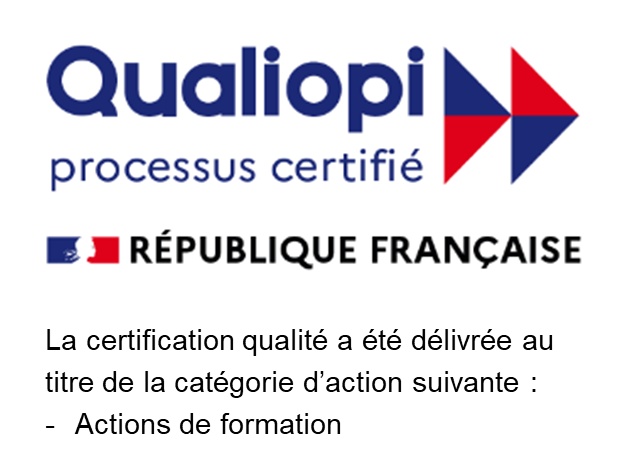UNDERSTANDING THE CULTURAL COMPLEXITIES OF OUR WORLD
NetExpat Team • July 11, 2019
Prof. Geert Hofstede is interviewed by Alain Verstandig, President, NetExpat Group
Alain Verstandig: Professor Hofstede, about 30 years ago, you dedicated yourself, as no one else had, to understanding the cultural complexities of our world. If you had to conduct the same extensive study today, what would your dimensions and scores be?
Prof. Geert Hofstede:
Our world and its population has indeed changed since the late 80’s. My Dutch colleague, Sjoerd Beugelsdijk, compared data from the World Values Survey related to the six dimensions in our 2010 book, across two generations, 30 years apart, and his findings are very interesting. Take the dimension “Power Distance”, which measures how societies handle inequalities among people: people in societies scoring high in “Power Distance” accept a hierarchical order in which everyone has a place. In societies with low “Power Distance” scores, people constantly challenge inequalities of power. When you compare scores across 30 years, all cultures have gone down: our whole world is less hierarchical and requests more justification when facing inequalities. But the difference between countries has remained the same. All of the data I collected 30 years ago is still relevant and highlights relative positions of one country to the other, which has not changed much. What we have found is that all countries have evolved together.
The same applies to “Individualism”: all cultures today have become more individualist compared to 30 years ago. People from all cultures are expected to take care of themselves and their immediate families. Today, people’s self-image is more defined in terms of “I” than “we”. But here as well, differences between countries have remained the same.
The third dimension for which this is the case is our latest addition “indulgence versus restraint”: a measure of subjective feelings of happiness. “Indulgence” stands for a relatively free gratification of basic and human desires related to enjoying life and having fun. Its opposite, “restraint”, stands for a conviction that such gratification needs to be curbed and regulated by strict social norms. The younger generation in all countries has moved to the “indulgence” pole, while the ranking of countries was not affected. The remaining three dimensions did not systematically move, and the rankings of countries, on which our scores are based, showed to be rather stable.
So, all my scores have been proven to be quite stable over time. The forces that cause cultures to shift tend to be global or continent wide. This means that they affect many countries at the same time, so if their cultures shift, they shift together, and their relative positions remain the same.
AV: The word “culture” is often used to represent completely different concepts: what differences do you see between national cultures and corporate cultures?
GH: My research, along with the research of others, shows that national cultures tend to be acquired during the first 10 years of our lives. National cultures are built on fundamental values: what we perceive as right and wrong. They are not in our mind, they’re in our guts.
On the other hand, corporate cultures or job cultures are acquired much later in our working environment: they are more a set of practices and are meant for everyone in an organization to work harmoniously and efficiently together.
Even if the same word “culture” is used in these two concepts, our core “national values” are of a completely different nature than “corporate cultures”. You find far less conflict between organization and national cultures than among different national cultures.
AV:
How critical are intercultural competencies in our modern world?
GH:
Well Alain, it is encouraging to see that a growing majority of young graduates are exposed, through their studies, to cultural differences. Programs like Erasmus and all the study abroad initiatives push our future workforce to discover what a worldwide citizenship could mean.
But there is a difference between being a global student and becoming an active global employee. I see an unfortunate tendency for adults who
are successful in their specialized career to think that they are superior and do not need any cultural sensitivities. But to be a true world citizen, one of the most important things is that you are genuinely interested in other people. Our world is indeed more global, but the recipe for success in any international endeavor is still the same: if you are only interested in yourself, if you just listen to yourself, if you have no time
to listen and discover others, then 30 years ago you would have failed, and you will fail today. Humility is still central to the notion of being a world citizen.
Share this post

A series of trends and events are impacting the way APAC-based companies are doing business, as well as how international organizations engage with them. As workforce borders within this active region continue to blur, intercultural agility has become more important – and more nuanced – than ever before. Whether it’s a business that's building a diverse workforce within the APAC region or a multi-national company working across cultures to do business with them, employers and the employees that work for them must forget everything they think they know about intercultural communication. Growing workforce diversity means not just knowing about the culture a business is headquartered in, but also the many cultures making up their staff. Intercultural training has therefore become a crucial investment for any business hoping to thrive in this diverse landscape.

Most mobile employees accept international relocations with mixed feelings that include excitement and curiosity. However, they’re often surprised when their move comes with more feelings of disorientation than they expected. Culture shock – the feelings of confusion, disconnectedness, and anxiety that people experience while integrating into a new culture – can make it difficult for mobile employees to transition into their new assignments effectively. It can also make it difficult for their accompanying families to settle into their new home, adding further stress to your employees’ relocation experiences. It all negatively impacts employees – but it has costly negative impacts for the organization, too. Understanding the stages of culture shock can make dealing with it easier. Below, we take a look at each and offer suggestions your employees can use for navigating them. While supporting them on their journeys helps them to integrate into their new surroundings faster and with greater ease – it also benefits business productivity, organizational goals, and the company’s bottom line. Stages of Culture Shock & Suggestions for Dealing with Them

Between rising costs and limited budgets, it’s no surprise that many organizations turn to lump sum payments to control talent mobility spending. But is this approach effective – or can it actually end up costing companies more? In this blog post, we’ll discuss the unexpected costs associated with lump sum payment models, where they can go wrong, their impacts on the employee experience, and why managed moves benefit employees and organizations in the long run. Perception vs. Reality: Lump Sum Payment Outcomes When organizations offer lump sum payments to their mobile employees, they're often being driven by a few assumptions. They believe that their mobile employees: Possess sufficient financial skills to manage their relocation budget Are savvy enough to procure the right relocation services/providers at the right times Have enough host-country knowledge to navigate area-specific nuances independently Will decrease the need for administrative resources by self-managing their relocations

Patricia Glasel has a rich international background, having lived in several different countries growing up. Her journey began in Gabon, where she was born, and extended across various African nations due to her father's work. Patricia's extensive experience as an expatriate has given her a deep understanding of the joys and challenges of living abroad. She holds M.B.A. an a degree in organizational behavior and cross-cultural training from Northwestern University, which has equipped her to support others in their global mobility journeys. After having lived in 11 countries, Patricia currently resides in France and enjoys sharing her experiences to help others navigate their expatriation adventures. Patricia also serves as a Foreign Trade Advisor for the French Government, providing high-level insights and support for international trade initiatives.

In a competitive global market, organizations face a myriad of laws, regulations, and ethical standards. And because compliance requirements differ from one country to another, a workforce’s intercultural agility plays a significant part in a company’s ability to ‘be’ compliant in the countries they do business with. Intercultural misunderstandings can be costly, leading to safety issues, lost sales and missed business opportunities, but they can also result in hefty fines, sanctions, and even being barred from operating in key markets. Because the ability to navigate cultural differences is crucial to the success and sustainability of global organizations, cultural compliance should be a part of every organization’s overall compliance strategy.

NetExpat recently interviewed two key members of the Eramet Group Team about their efforts in providing intercultural training for their international workforce through their partnership with NetExpat. The initiative is designed to enhance cultural understanding and collaboration among expatriates and multicultural teams, leading to better teamwork and productivity. The interview offers insights on the implementation, impact on performance, family integration success, and much more.

Employee well-being benefits more than just employees. It also benefits employers and the customers they serve. What many organizations don’t realize is how much intercultural agility impacts employee well-being. Below, we’ll discuss the relationship between the two and why focusing on intercultural agility should always be a part of your global talent mobility strategy. Why Employee Well-being Matters Prioritizing employee well-being makes sense from a duty of care standpoint, but it also benefits businesses. Employees that are happy and well are typically more engaged at work. Employes that are culturally agile enjoy enhanced well-being, as they’re better able to collaborate with their teammates and customers. This results in higher levels of engagement at the individual level – and enhanced collaboration and innovation among teams. Additional outcomes include a stronger company culture, brand reputation, and employee retention rate. Customers also reap the benefits. When well-being is prioritized and employees are given the tools they need to succeed, they’re more likely to provide excellent customer service and care. Businesses benefit from higher customer satisfaction scores and brand loyalty. Conversely, the risks of not investing in employee well-being can be costly:

When organizations support mobile employees during an intercultural assignment, they benefit long after those same individuals repatriate. The trouble is, too many businesses don’t see repatriation as a component of the assignment, which can have negative outcomes for both them and the employees they’ve invested in: Without repatriation support, employees face a myriad of challenges, from reverse culture shock and career uncertainty to feeling diminished. Businesses end up paying the price, from employees being disengaged to losing talent altogether. Both have negative impacts on a company’s ROI.







